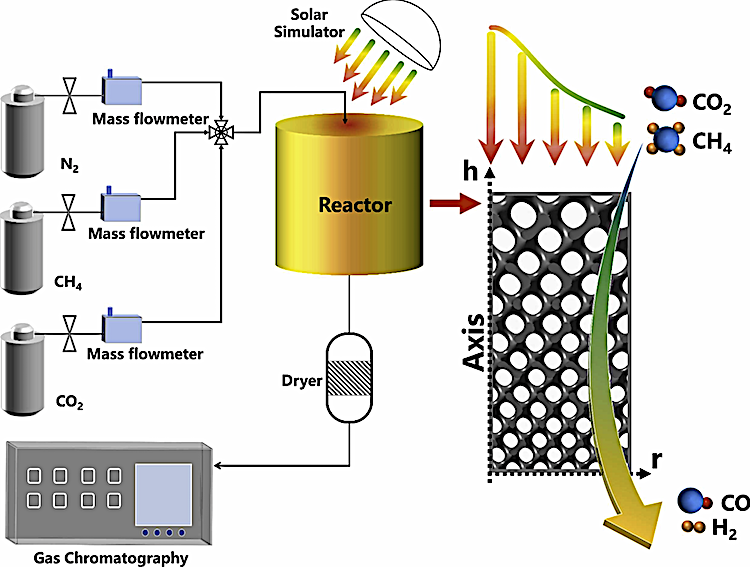
Abstract:
Solar-driven CO2 reforming of CH4 is considered a promising approach for achieving CO2 emission reduction and clean energy utilization simultaneously. However, reactors suffer from uneven temperature distribution and severe carbon deposition, leading to low solar-to-fuel efficiency. This study introduces a novel strategy for highly efficient solar-driven thermochemical CO2-to-fuel conversion based on hierarchical triply periodic minimal surfaces (TPMS) biomimetic foam reactors. The biomimetic hierarchical foam reactor exhibits a remarkably high light-to-fuel efficiency of 39.14 %, with CH4 and CO2 conversion rates reaching 72.6 % and 83.9 %, respectively, along with no obvious attenuation over 50 h. A 73.7 % reduction in temperature non-uniformity and a 96.9 % decrease in the carbon deposition rate are also demonstrated. The underlying mechanism is attributed to unique highly interconnected and smooth hierarchical pores, for which large pores promote the penetration of sunlight while small pores enhance fluid-solid energy transfer. Effects of solar irradiation conditions and foam thermal conductivity are investigated numerically, providing guides for further reactor optimization under different operating scenarios. This work presents a new approach for designing and manufacturing efficient direct solar-driven thermochemical CO2-to-fuel conversion reactors using hierarchical TPMS biomimetic foams.
Mu, Z., Liu, X., Song, C., Sun, N., Tian, C., & Xuan, Y. (2023). Direct solar-driven thermochemical CO2-to-fuel conversion with efficiency over 39 % employing hierarchical triply periodic minimal surfaces biomimetic foam reactors. Next Energy, 1(3), 100051. https://doi.org/10.1016/j.nxener.2023.100051
Read in full at Science Direct: Next Energy














































